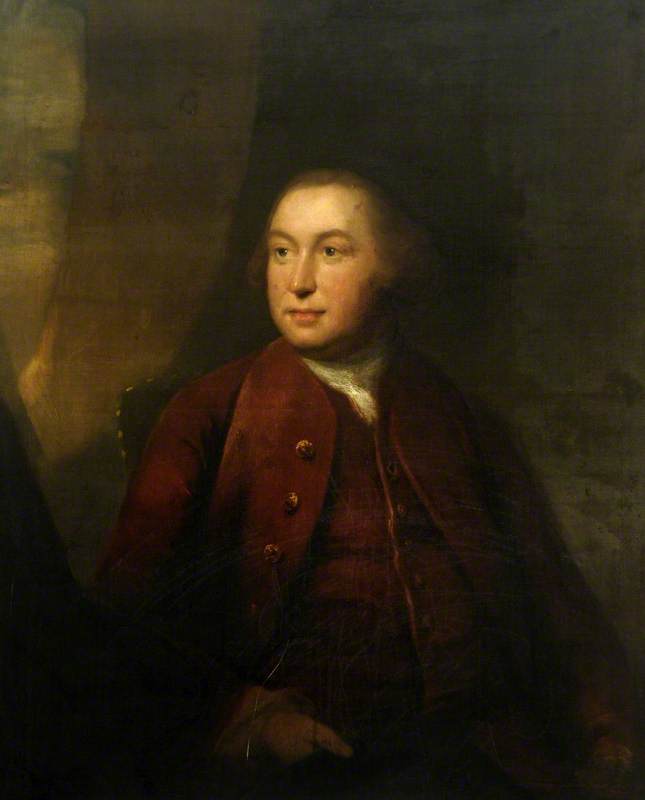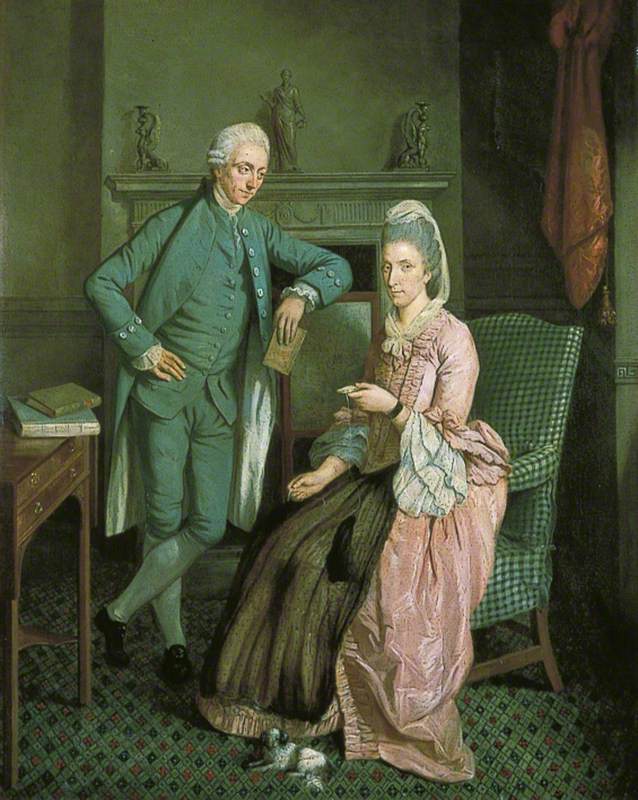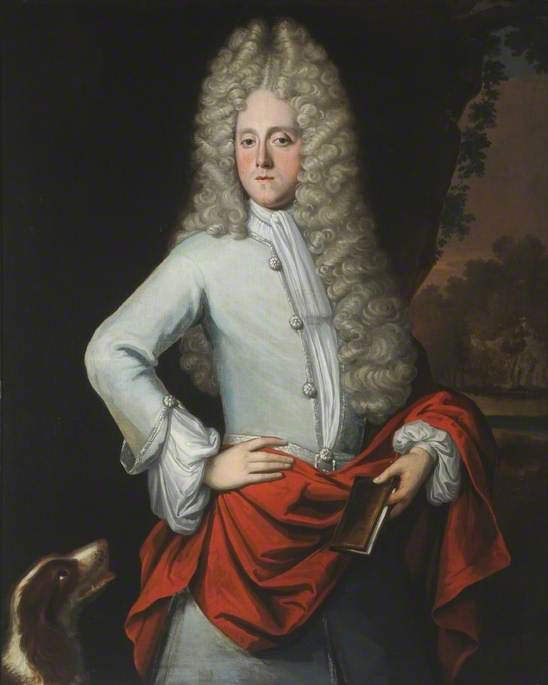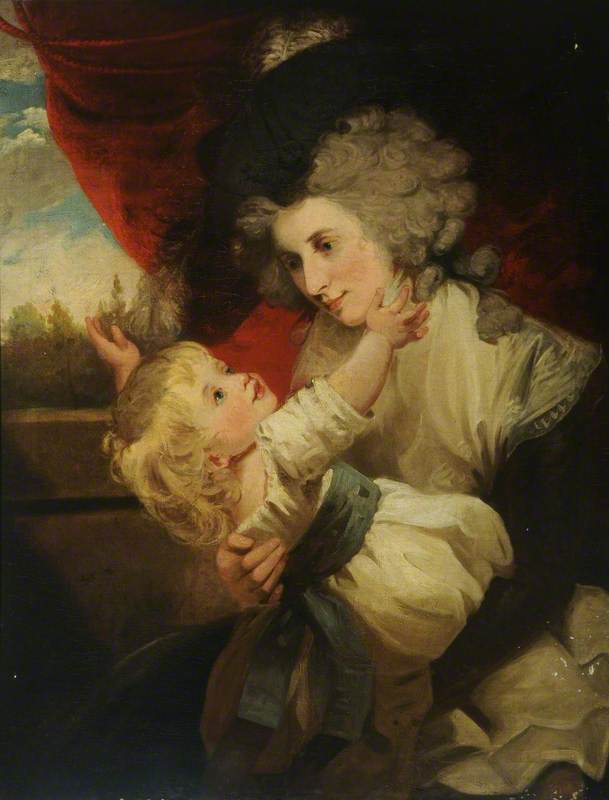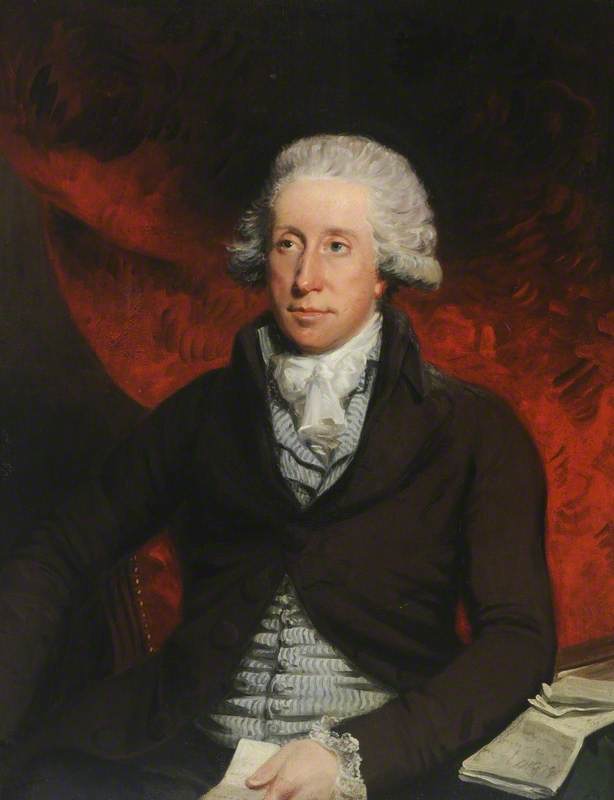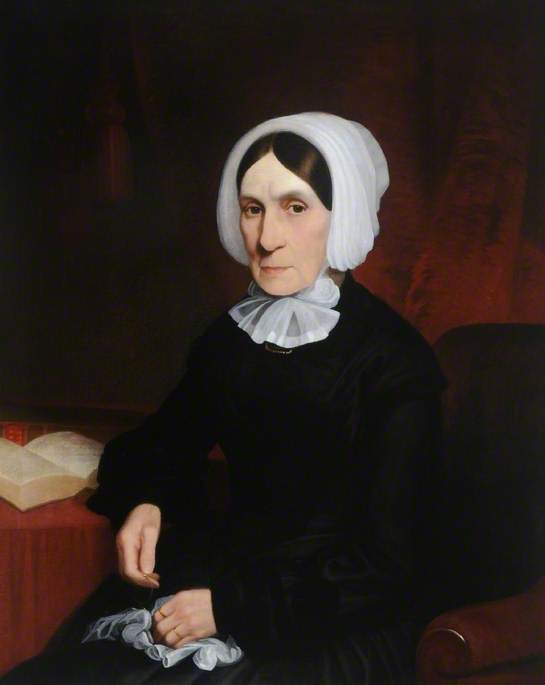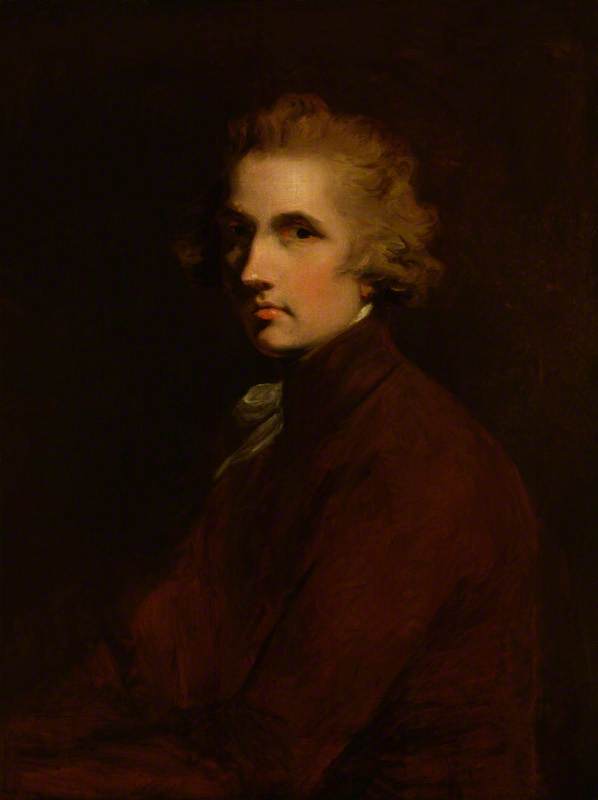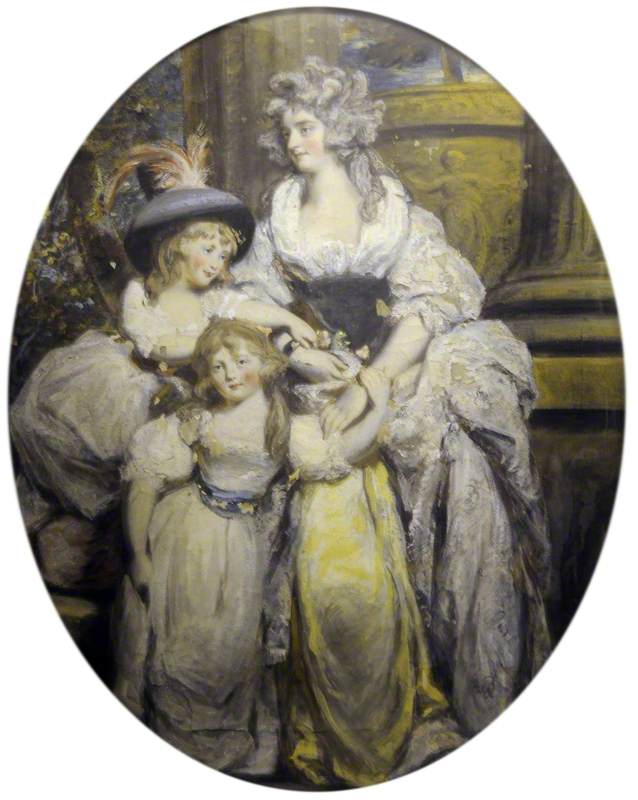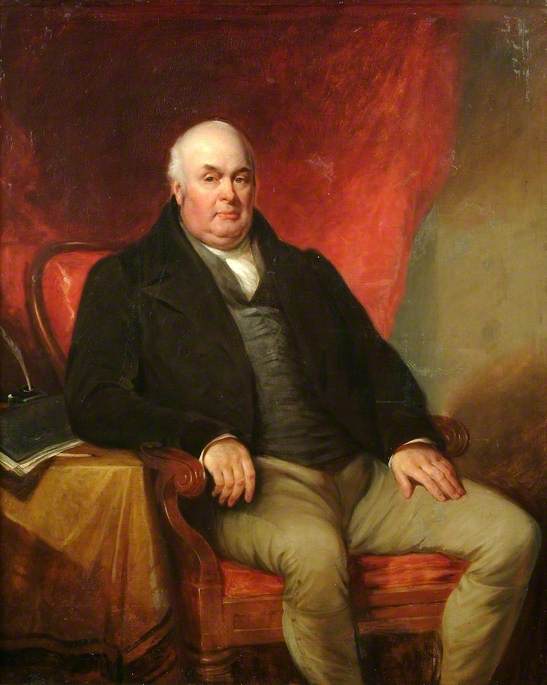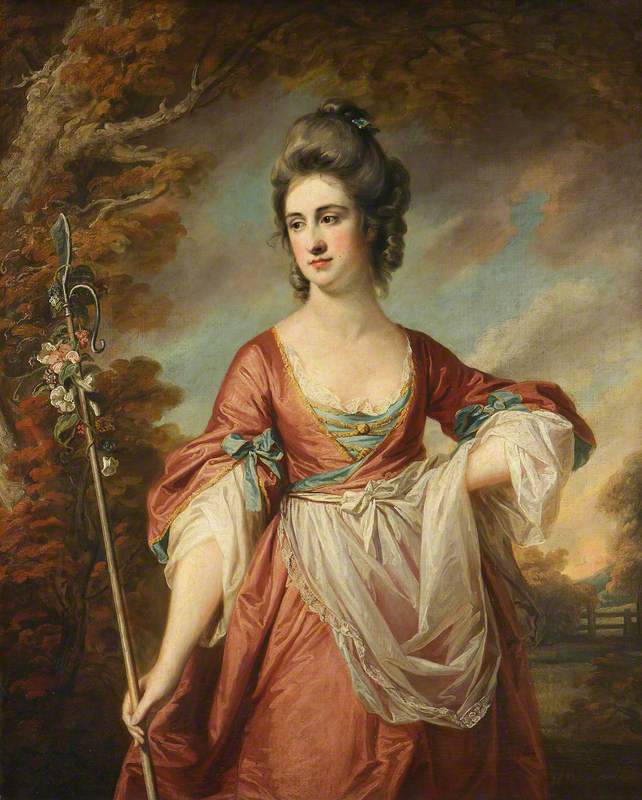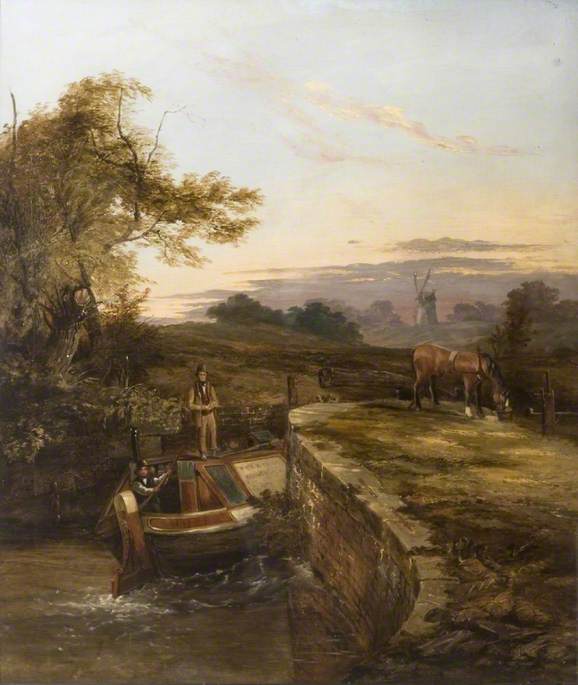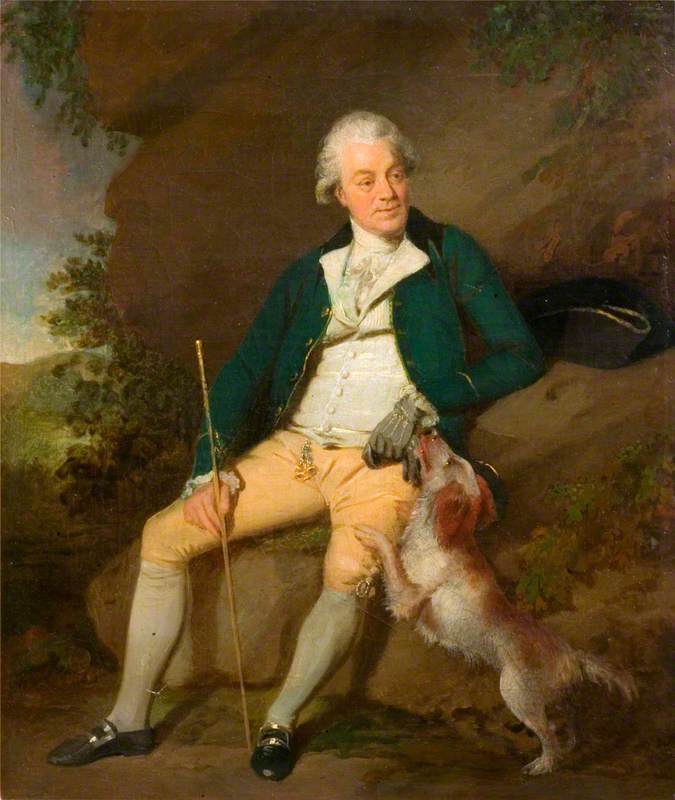-
Cannon Hall was the home of the Spencer Stanhopes from the 17th century until the 1950’s. For the first time, portraits of the family are on display, making connections between the different members of this fascinating extended family.
Stories from the archives shine a light on individual characters, explore familial relationships and daily life at Cannon Hall in the 18th and 19th centuries. The role of the Spencer Stanhopes in both historic events and their local community will also be explored through a series of remarkable objects.
The portraits and objects have been gifted in recent years by a descendant of the family to enrich the Cannon Hall Museum collections with some on show to the public for the first time in many years.
When Spencer Met Stanhope
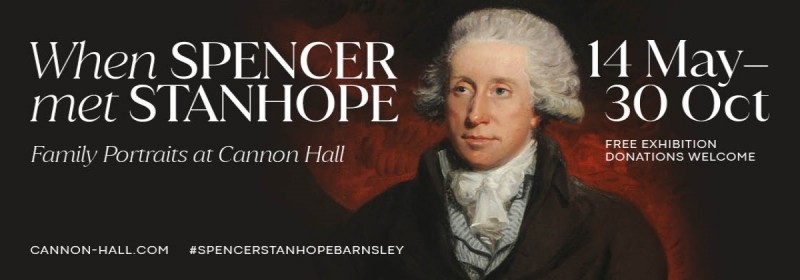 Image credit: Barnsley Museums
Image credit: Barnsley Museums
-
John Spencer (1719-1775) by Benjamin Wilson
John Spencer (1718–1775) mid-18th CJohn Spencer inherited Cannon Hall from his father, William Spencer,
in 1756. William had spent a great deal of money developing the Hall
and John engaged the York-based architect John Carr to make further
additions. In the 1760s the ground floor was extended to include a
library and a dining room. In April 1768 John noted in his diary;
“…Mr Carr went with me to Mr Tyler the statuary paid him his Bill from
thence he went with me to Cobbs, Chippendales, & several other of
the most eminent cabinet makers to consider of proper Furniture for
my drawing room”
Benjamin Wilson (1721–1788)
Oil on canvas
H 103 x W 83 cm
Cannon Hall
-
John’s sister, Ann married Walter Stanhope, formally connecting the
two families. John Spencer and John Stanhope were united by the
marriage of their siblings and by the fact that they both became
godfather to their nephew, Walter. They wrote to each other regularly
about his abilities and their hopes for his future. In 1765 John noted the
following in his diary about a visit to London with the young Walter;
“…At Westminster Hall with Watty, drank chocolat […]
& saw many other curiositys.”
John never married and he left Cannon Hall to his nephew, Walter.
-
Conversation Piece
The artist Benjamin Wilson was the son of a wealthy clothes
manufacturer in York. He trained in London and later set up a studio
there after time spent in Dublin. He was a particularly popular choice
with the Yorkshire gentry visiting London.
Benjamin Wilson (1721–1788) (attributed to)
Oil on canvas
H 91.3 x W 73.7 cm
Leeds Museums and Galleries
-
Sir William Lowther (1663–1729), 1st Bt Unknown Artist
Sir William Lowther (1663–1729), 1st Bt 1712Sir William Lowther, 1st Baronet of Swillington was educated at
Cambridge before training as a lawyer. He was also the High Sheriff
of Yorkshire and an MP. In 1697 his sister, Mary Lowther, married John
Stanhope (1678-1736). It was agreed that Sir William (rather than his
father) would pay his sister’s dowry of £50 but this didn’t happen for
many years. William and his father ended up in a legal dispute over
the payment with the Archbishop of York acting as an arbitrator.
William was ordered to apologise to his father which he refused to
do leading his father to refer to him as ‘barbarous’ and having a
‘rebellious disobedience’
unknown artist
Oil on canvas
H 125.2 x W 99.5 cm
Cannon Hall
-
In 1702 William wrote to his brother-in-law, John Stanhope in
reference to the dowry:
“I do confess you ought to have it but
I think it is very hard on me to pay it.”
By this point John and Mary had already been married for about
five years and had just had their first son.
It was Mary and John Stanhope’s second son, Walter, who married
into the Spencer family. The Lowther and Spencer Stanhope families
remained connected for many years with later generations of
the Lowthers often visiting Cannon Hall and being involved in the
political ambitions of the family.
-
Mary Winifred Pulleine (1763–after 1787), and Her Son Walter by John Hoppner
Mary Winifred Pulleine (1763–after 1787), and Her Son Walter 1784Mary Winifred Pulleine was described as the greatest heiress of her day
and was an intelligent and well-educated woman with an interest in
current affairs and politics. She was well-suited to her husband Walter
Spencer Stanhope who was a prominent MP. The couple married in
1783 and split their time between Grosvenor Square in London and
Cannon Hall. Mary actively supported Walter’s political career and
campaigned on his behalf but expressed her frustrations that women
were not allowed to vote.
John Hoppner (1758–1810)
Oil on canvas
H 90 x W 69.3 cm
Cannon Hall
-
A letter from her son, John, to a family member shows Mary Winifred’s
great success as a society hostess:
“…Mrs Spencer Stanhope excited a ferment in the fashionable world
last week by her two excessively grand balls; which were attended by
all the wealth, beauty & fashion of this gay metropolis; the whole was
conducted upon a superior style of elegancy…”
-
Self Portrait c.1800
This portrait, and the one of her husband, Walter, were both by the
fashionable society portraitist, John Hoppner. He also painted portraits
of Queen Charlotte and the Prince of Wales (later King George IV).
John Hoppner (1758–1810)
Oil on canvas
H 76.8 x W 63.9 cm
Royal Academy of Arts
-
Walter Spencer Stanhope (1749–1822) by John Hoppner
Walter Spencer Stanhope (1749–1822) 1784Walter Spencer Stanhope was known as ‘Little Watty’ by his uncles, John
Stanhope and John Spencer who often discussed their nephew. Watty was
an intelligent and capable child who later studied at Oxford and became
an MP for a number of constituencies. Walter, Mary and their family spent
part of the year in London and part in Yorkshire. In all their residences
they dined with many prominent people including the abolitionist, William
Wilberforce and the Prime Minister, William Pitt the Younger. Walter was
known for the humanitarian nature of his politics, including being fair to
tenants and opposing cruelty to animals in some sports.
John Hoppner (1758–1810)
Oil on canvas
H 119.5 x W 68.7 cm
Cannon Hall
-
In 1783 Walter wrote to Mary requesting an opportunity to propose to her;
“… to listen favourably to a Man who truly loves her, who woos her for
herself, and not for her fortune; who aspires to call her his because
he is convinced that to pass his life with her and to study her
happiness could make him most happy.”
Mary and Walter went on to have fifteen children and wrote about them
with great affection. Their son, Henry, died in 1808 and during his illness
Walter was very concerned, describing Henry as ‘…very pale, thin &
weakly’. Walter also acknowledged John Smith, the illegitimate son of
his uncle, John Spencer, supporting him financially and including him as
part of the family.
-
Mrs Elizabeth Spencer Stanhope (1795–1873) by Abel Hold
Mrs Elizabeth Spencer Stanhope (1795–1873) 1873Lady Elizabeth was the daughter of Thomas Coke of Holkham Hall,
Norfolk. Her mother died when she was four and by the time she
was eleven her elder sisters had both married. At a young age she
became responsible for the management of a very large home on
behalf of her father.
She met John Spencer Stanhope when they were both staying at
Dalmeny, near Edinburgh. She took an interest in his travels and he
was very impressed by her character. They married in 1822 and had
six children.
This portrait of Lady Elizabeth was painted in the final year of her life
by the local artist Abel Hold. At the age of 78 she is shown as a rather
severe figure but images of her in her youth show a more vivacious
personality.
Abel Hold (1815–1896)
Oil on canvas
H 89.8 x W 72.3 cm
Cannon Hall
-
Elkanah Clegg (1803–1872), Woodman for the Spencer Stanhope Family
Abel Hold lived at Cawthorne, the village near Cannon Hall. He
was a well-respected painter and showed many paintings at the
Royal Academy in London. In times of financial hardship, he would
encourage the Spencer Stanhope family to commission paintings
from him.
Abel Hold (1815–1896)
Oil on canvas
H 75.5 x W 63 cm
Cawthorne Victoria Jubilee Museum Trust
-
Adelaide Augusta Wilhelmina Dutton, Wife of Sir Henry HunlokeAdelaide Augusta Wilhelmina Dutton, Wife of Sir Henry Hunloke by Daniel Gardner
Margaret Roberts Hunloke née Coke (1751–1821) 1781Margaret Roberts Coke married Sir Henry Hunloke, 4th Baronet in 1769.
They lived at Wingerworth Hall near Chesterfield and had numerous
children described in a newspaper report as, ‘their beautiful and
numerous progeny’.The same article reports their eldest son’s coming
of age party in 1794 and describes a lavish affair. The passage was
dressed with real orange trees hung with fruit and coloured lights.
The pride of the parents was indicated by their; “…countenances lighted up with sweet emotion which results from
parental affection”. As the sister of Thomas Coke, Margaret was aunt to Elizabeth Coke
who married John Spencer Stanhope of Cannon Hall. Lady Hunloke
and her sister-in-law, Jane, both had their portraits painted by Daniel
Gardner
Daniel Gardner (1750–1805)
Oil & gouache on paper
H 130 x W 80 cm
Cannon Hall
-
Daniel Gardner c.1770
Daniel Gardner was a popular portraitist of the period
and had trained with George Romney. He had an unusual technique
of mixing oil and pastel and applying this to paper before attaching
the painting to canvas. It
Daniel Gardner (1750–1805)
Oil on canvas
H 75.2 x W 57.5 cm
National Portrait Gallery, London
-
Lady Jane Coke (1753–1800), née Dutton, and Her Daughters, Jane Elizabeth and Anne Margaret CokeLady Jane Coke (1753–1800), née Dutton, and Her Daughters, Jane Elizabeth and Anne Margaret Coke by Daniel Gardner
Lady Jane Coke (1753–1800), née Dutton, and Her Daughters, Jane Elizabeth and Anne Margaret Coke 1781Jane Dutton married Thomas Coke of Holkham Hall, Norfolk, in 1775.
They had three daughters and the eldest two are included in this
painting: Jane Coke, later Viscountess Andover and Anne Coke,
later Viscountess Anson. In 1795 Jane and Thomas Coke had a third
daughter called Elizabeth. She married John Spencer Stanhope who
inherited Cannon Hall from his father, Walter in 1821.
Jane and her husband, Thomas Coke oversaw the expansion of the
Holkham Estate and were famed for their countryside management.
Jane was a committed abolitionist as well as having a reputation for
supporting those in poverty.
Jane passed away when her youngest daughter, Elizabeth was only
four years old. Elizabeth’s father provided for her and supplied her
with a dowry
Daniel Gardner (1750–1805)
Oil on canvas
H 104 x W 80 cm
Cannon Hall
-
John Stanhope 1629–1693 by English School
John Stanhope was born in London and studied law in the city at
Gray’s Inn. He came from a family of lawyers and merchants with
connections to Horsforth near Leeds. He practised law in London
and had the reputation for being fair in his dealings with people. In
1662 John Stanhope moved to Horsforth permanently and continued
his profession in Yorkshire. He also built a significant library of books
and enjoyed studying his family history. In 1677 he married Hannah
Horseman, a wealthy heiress 26 years younger than him.
The document in the lower left of the painting is dated 1687.
Unfortunately, we don’t know who the artist was but they cleverly
used the paper as a way to include the date.
John Stanhope 1629–1693, English School 1687
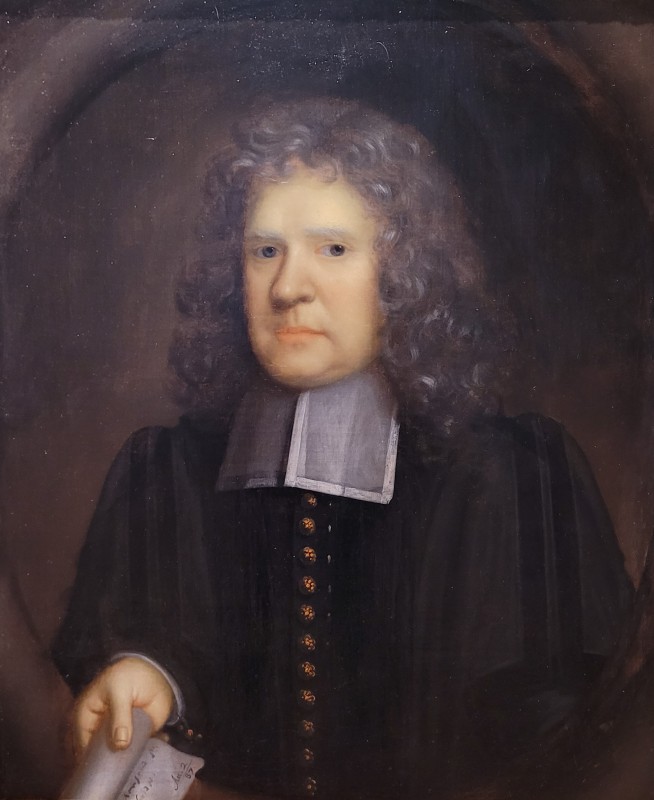 Image credit: Barnsley Museums
Image credit: Barnsley Museums
-
Sir Walter Spencer Stanhope (1827-1911) by Walter William Ouless RA, 1908
Sir Walter Spencer Stanhope inherited Cannon Hall after his
father’s death in 1873. He had a distinguished military career as
well as being a magistrate and a Conservative MP. According to
his obituary he was also, ‘a fine shot and expert angler’. Sir Walter
had the reputation of being fair to his tenants often subsidising
those who needed financial support. He also had a strong
Christian faith. The same obituary listed his involvement in many
local organisations including the Oaks Colliery Explosion Fund and
the West Riding Miner’s Permanent Relief Fund and said:
“The county is the poorer for the loss
of such a man.”
Sir Walter Spencer Stanhope (1827-1911) by Walter William Ouless RA, 1908
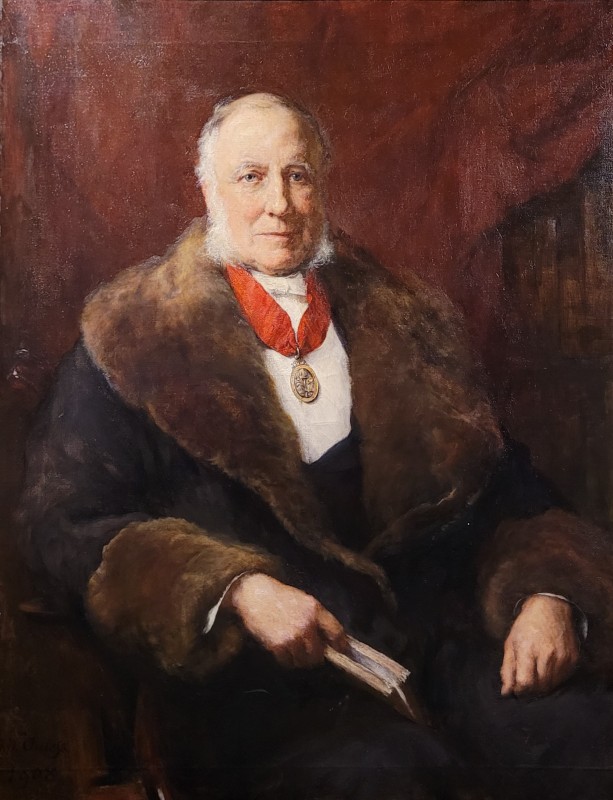 Image credit: Barnsley Museums
Image credit: Barnsley Museums
-
In 1856 he married Elizabeth Buxton and they had eleven children.
Their family was a creative and artistic one and Cannon Hall was
often the venue for music, fancy dress and amateur theatre. Their
daughter, Gertrude became a well-respected sculptor and their
niece, Evelyn De Morgan a very successful painter.
-
Robert W. Darwin (1766–1848), Charles Darwin's Father
The painting is by W W Ouless who
painted formal portraits of many prominent people in the
Victorian and Edwardian eras.
Walter William Ouless (1848–1933)
Oil on canvas
H 97.5 x W 78.8 cm
Shrewsbury Museum and Art Gallery
-
Winifred Pulleine (née Collingwood) 1738-1782 by British School, 1760s
Winifred Collingwood married Thomas Pulleine of Carlton Hall,
Yorkshire in 1760. They had one child, Mary Winifred Pulleine who went
on to marry Walter Spencer Stanhope of Cannon Hall. Winifred was
only forty-four when she died in 1782 by which time her husband had
already passed away. The estate and property of Carlton Hall passed
to their daughter who was sixteen at the time.
The portrait of Winifred Pulleine shows her in an informal gown that
was very popular in the 1760s. Formal dresses at this time required a
corset and stays to keep the wearer perfectly upright. Having less rigid
clothing allowed women to have some time in a more relaxed posture.
This painting has previously been described as ‘After Francis Cotes’.
Winifred Pulleine (née Collingwood) 1738-1782 British School, 1760s
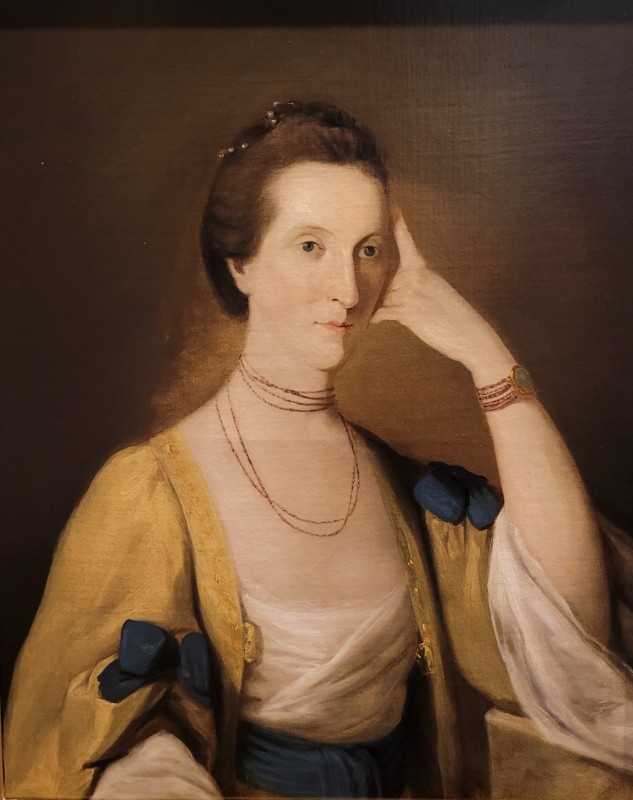 Image credit: Barnsley Museums
Image credit: Barnsley Museums
-
Elizabeth Cust (1750–1779), Mrs Philip Yorke I 1770 (?)
Cotes was an important portraitist of the period working in both
pastels and oils. He was a founder member of the Royal Academy
alongside Sir Joshua Reynolds and many others.
Francis Cotes (1726–1770)
Oil on canvas
H 125.5 x W 100.5 cm
National Trust, Erddig
-
Walter Stanhope (1704–1759) by Frans van der Mijn, 1755
Walter Stanhope was educated at Bradford Grammar School
and, following an apprenticeship, set up his own business selling
cloth from the Headrow, Leeds. In 1742 he married Mary Warde
but she passed away in 1747 along with their first child. A year
later he married Ann Spencer whose brother owned Cannon Hall.
This marriage formally united the Spencer and Stanhope families
who had known each other for many years. In 1748 John Spencer
wrote to his sister congratulating her on her marriage;
“…I beg leave to congratulate you upon the late change to your
name which I heartily wish you may never have occasion to repent
of, but through an uninterrupted series of Happyness bless the
Day on which you became a Stanhope.”
Walter Stanhope 1704–1759 by Frans van der Mijn, 1755
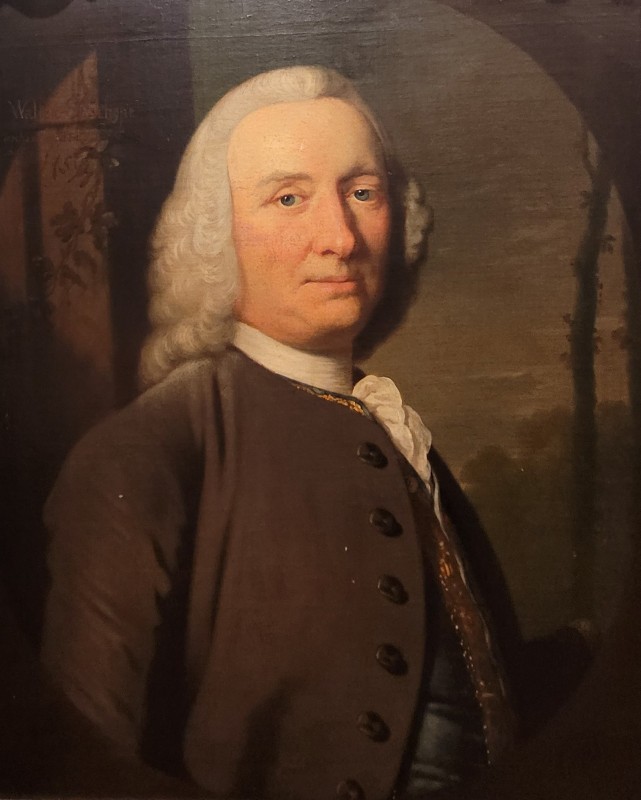 Image credit: Barnsley Museums
Image credit: Barnsley Museums
-
They had one child who survived into adulthood, also named
Walter Stanhope. He later changed his surname to Spencer
Stanhope after inheriting Cannon Hall from his mother’s brother,
John Spencer. Ann had stayed closely involved in the running of
Cannon Hall when it was owned by her bachelor brother. She
helped with everything from recommending servants to recipes
for cleaning products and the ordering of new linen.
